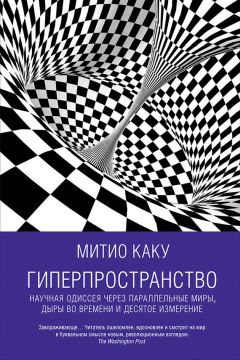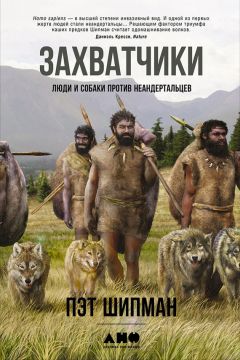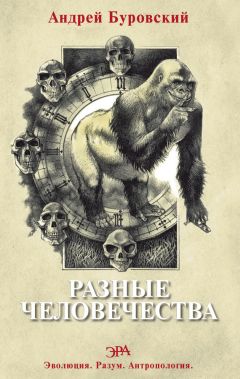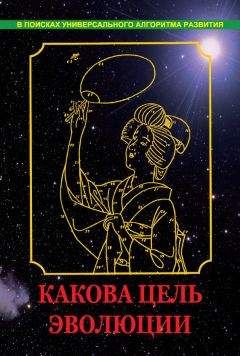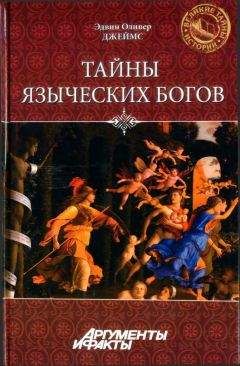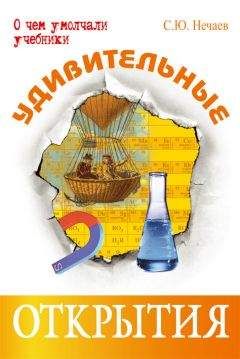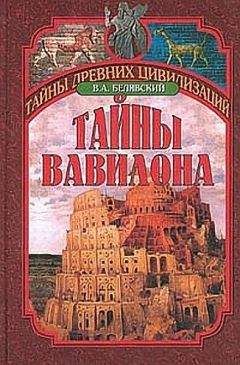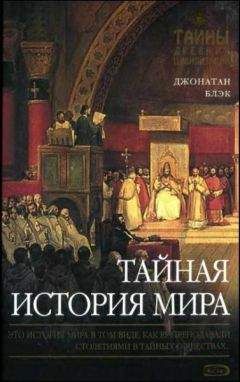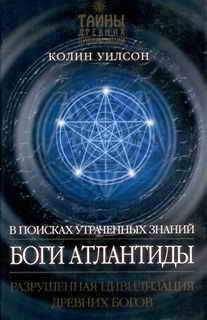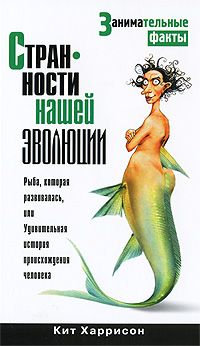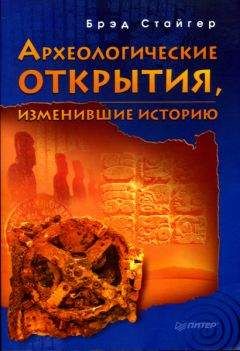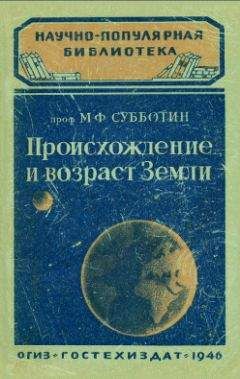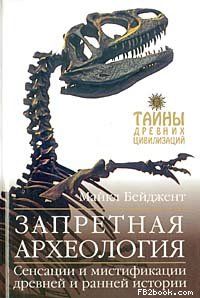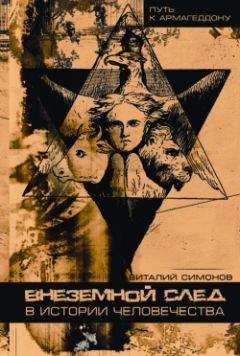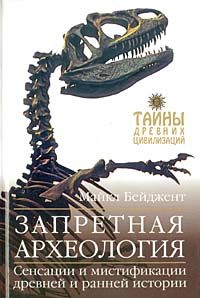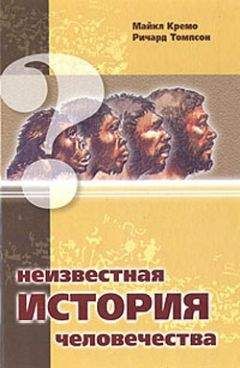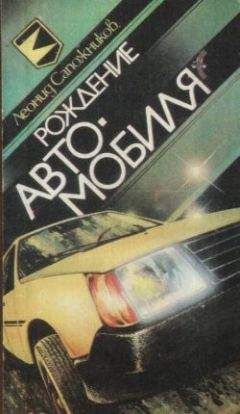Леонид Вишняцкий - Неандертальцы: история несостоявшегося человечества
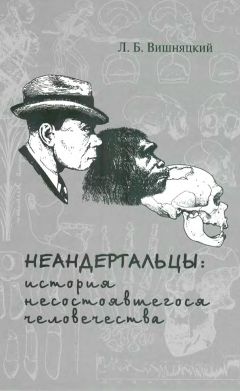
Скачивание начинается... Если скачивание не началось автоматически, пожалуйста нажмите на эту ссылку.
Жалоба
Напишите нам, и мы в срочном порядке примем меры.
Описание книги "Неандертальцы: история несостоявшегося человечества"
Описание и краткое содержание "Неандертальцы: история несостоявшегося человечества" читать бесплатно онлайн.
Неандертальцы не были нашими прямыми предками, но тем не менее они наши ближайшие родственники, и у нас с ними очень много общего. Называть их тупиковой ветвью эволюции, по мнению автора этой книги, столь же неверно, как неверно применять этот эпитет по отношению, скажем, к коренному населению Тасмании и другим первобытным популяциям людей, уничтоженным в результате европейской колонизации. Скорее, неандертальцев следует считать «дублёрами» гомо сапиенс, запасным вариантом антропогенеза. Почему же история выбрала нас, а не их? Как происходил этот выбор? Что сыграло в нём решающую роль? Был ли он предопределен заранее или зависел больше от привходящих и потому во многом случайных обстоятельств?
Автор рассматривает эти и многие другие вопросы, попутно суммируя и в доступной для неспециалистов форме излагая то, что известно сейчас о происхождении и эволюционной истории неандертальцев, их умственных и языковых способностях, материальной и зарождавшейся духовной культуре, о динамике их расселения и причинах вымирания. По каждой из перечисленных тем учтены наиболее интересные и важные сведения, имевшиеся в распоряжении палеоантропологии, археологии и смежных с ними наук на середину 2010 г.
Книга адресована всем, кого занимает древнейшее прошлое человечества — от академиков до студентов и школьников старших классов.
Churchill S. E. Cold adaptation, heterochrony and Neandertals // EA. 1998. N 7. P. 46–61.
Churchill S. E. Bioenergetic perspectives on Neanderthal thermoregulatory and activity budgets // K. Harvati and T. Harrison (eds). Neanderthals Revisited: New Approaches and Perspectives. Dordrecht: Springer. 2006. P. 113–133.
Churchill S. E., Franciscus R. G., McKean-Peraza H. A., Daniel J. A., Warren B. R. Shanidar 3 Neandertal rib puncture wound and paleolithic weaponry // JHE. 2009. N 57. P. 163–178.
Cloutier C. T., Broadfield D. C., Wolf T., Halloran A. R. A semi-free ranging chimpanzee (Pan Troglodytes) gives birth at 65 years of age: Implications for delayed reproductive senescence // AJPA. 2009. N 138 (Supplement 49). P. 107.
Condemi S. The Neanderthals: Homo neanderthalensis or Homo sapiens neanderthalensis? Is there a contradiction between the paleogenetic and the paleoanthropological data? // J. Orschiedt and G.-C. Weniger (eds). Neanderthals and Modern Humans — Discussing the Transition. Central and Eastern Europe from 50.000–30.000 B. P. Mettmann: Neanderthal Museum. 2000. P. 287–295.
Coolidge F. L., Wynn T. The Rise of Homo sapiens: The Evolution of Modern Thinking. Chichester: Wiley-Blackwell, 2009.
Coon C. S. The Origin of Races. New York: Alfred A. Knopf, 1962.
Cooper J. H. Did cannibalis and spongiform encephalopathy contribute to the demise of the Neanderthals // MQ. 2000. N 41. P. 175–180.
Curnoe D. et al. Timing and tempo of primate speciation // JEB. 2006. N 19. P. 59–65.
Czarnetzki A., Gaudzinski S., Pusch C. M. Hominid skull fragments from Late Pleistocene layers in Leine Valley (Sarstedt, District of Hildesheim, Germany) // JHE. N 41. P. 133–140.
D’Errico F. The invisible frontier. A multiple species model for the origin of behavioral modernity // EA. 2003. N 12. P. 188–202.
D’Errico F. The origin of humanity and modern cultures: Archaeology’s view // Diogenes. 2007. N 214. P. 122–133.
D’Errico F., Goñi M. F. S. Neandertal extinction and the millennial scale climatic variability of OIS 3 // QSR. 2003. N 22. P. 769–788.
D’Errico F., Zilhão J., Julien M., Baffier D., Pelegrin J. Neanderthal acculturation in Western Europe? A Critical review of the evidence and its interpretation // CAn. 1998. N 39 (Supplement). P. 1–44.
D’Errico F., Henshilwood C., Lawson G., Vanhaeren M., Tillier A.-M., Soressi M., Bresson F., Maureille B., Nowell A., Lakarra J., Backwell L., Julien M. Archaeological evidence for the emergence of language, symbolism, and music — an alternative multidisciplinary perspective // JWP. 2003. N 17. P. 1–70.
Davies R., Underdown S. The Neanderthals: a social synthesis // CAJ. 2006. N 16. P. 145–164.
Dean D., Hublin J.-J., Holloway R., Ziegler R. On the phylogenetic position of the pre-Neanderthal specimen from Reilingen, Germany // JHE. 1998. N 34. P. 485–508.
Deaner R. O. et al. Overall brain size, and not encephalization quotient, best predicts cognitive ability across non-human primates // BBE. 2007. N 70. P. 115–124.
de Beaune S. A. Essai d’une classification typologique des galets et plaquettes utilisés au Paléolithique // GP. 1989. N 31. P. 27–64.
Debénath A., Dibble H. Handbook of Paleolithic typology. Philadelphia: The University Museum, University of Pennsylvania, 1994.
Defleur A. Les sépultures moustériennes. Paris: CNRS, 1993.
Defleur A., White T., Valensi P., Slimak L., Crégur-Bonnoure É. Neanderthal cannibalism at Moula-Guercy, Ardèche, France // Science. 1999. N 286. P. 128–131.
De Giorgio M., Jacobsson M., Rosenberg N. A. Explaining worldwide patterns of human genetic variation using a coalescent-based serial founder model of migration outward from Africa // PNAS. 2009. N 106. P. 16057–16062.
DeGusta D., Gilbert W. H., Turner S. P. Hypoglossal canal size and hominid speech // PNAS. 1999. N 96. P. 1800–1804.
De Miguel C., Henneberg M. Variation in hominid brain size: How much is due to method? // HOMO. 2001. N 52. P. 2–56.
Doyle W. J., Johnston O. On the meaning of increased fluctuating dental asymmetry: a cross-population study // AJPA. 1977. N 46. P. 127–134.
Drell J. L. L. Neanderthal: A history of interpretation // OJA 19. 2000. P. 1–24.
Duarte C., Mauricio J., Pettitt P. B., Souto P., Trinkaus E., Van der Plicht H., Zilhão J. The early Upper Paleolithic human skeleton from the Abrigo do Lagar Velho (Portugal) and modern human emergence in Iberia // PNAS. 1999. N 96. P. 7604–7609.
Duarte C., Hillson S. W., Holliday T. W., Trinkaus E. The Lagar Velho 1 humaqn skeletal inventory // J. Zilhão and E. Trinkaus (eds). Portrait of the Artist as a Child. The Gravettian Human Skeleton From the Abrigo do Lagar Velho and Its Archeological Context. (Trabalhos de Arqueologia 22). Lisboa: Instituto Português de Arqueologia. 2002. P. 220–241.
Duchin L. E. The evolution of articulate speech: comparative anatomy of the oral cavity in Pan and Homo // JHE. 1990. N 19. P. 687–697.
Einwögerer T., Friesinger H., Händel M., Neugebauer-Maresch C., Simon U., Teschler-Nicola M. Upper Palaeolithic infant burials // Nature. 2006. N 444. P. 285.
Eiseley L. Neandertal man and the dawn of human paleontology // QRB. 1957. N 32. P. 323–329.
Estabrook V. H. Sampling biases and new ways of addressing the significance of trauma in Neandertals. Unpublished Ph. D. dissertation. The University of Michigan, 2009.
Estévez J. Vanishing carnivores: What can the disappearance of large carnivores tell us about the Neanderthal world? // IJO. 2004. N 14. P. 190–200.
Fabre V., Condemi S., Degioanni A. Genetic Evidence of Geographical Groups among Neanderthals // PLoS ONE 4(4): e5151 (doi:10. 1371/journal. pone. 0005151), 2009.
Farizy C. Spatial patterning of Middle Paleolithic sites // JAA. 1994. N 13. P. 153–60.
Féblot-Augustins J. Raw material transport patterns and settlement systems in the European Lower and Middle Palaeolithic: continuity, change and variability // W. Roebroeks and C. Gamble (eds). The Middle Palaeolithic Occupation of Europe. Leiden: University of Leiden. 1999. P. 193–214.
Fedele F. G. et al. Timescales and cultural process at 40,000 BP in the light of the Campanian ignimbrite eruption, Western Eurasia // JHE. 2008. N 55. P. 834–857.
Fernandes P., Raynal J.-P., Moncel M.-H. Middle Palaeolithic raw material gathering territories and human mobility in the southern Massif Central, France: first results from a petro-archaeological study on flint // JAS. 2008. N 35. P. 2357–2370.
Fernández S., Fuentes N., Carrión J. S., González-Sampériz P., Montoya E., Gil G., Vega-Toscano G., Riquelme J. A. The Holocene and Upper Pleistocene pollen sequence of Carihuela Cave, southern Spain // Geobios. 2007. N 40. P. 75–90.
Finlayson C. Neanderthals and Modern Humans. Cambridge: Cambridge University Press, 2004.
Finlayson C. The Humans Who Went Extinct: Why Neanderthals Died Out and We Survived. New York: Oxford University Press, 2009.
Finlayson J. C., Barton R. N. E., Stringer C. B. The Gibraltar Neanderthals and their extinction // J. Zilhão, T. Aubry, A. Faustino Carvalho (eds). Les premiers hommes modernes de la Péninsule Ibérique. (Trabalhos de Arqueologia 17). Lisboa: Instituto Português de Arqueologia. 2001. P. 117–122.
Finlayson C. et al. Late survival of Neanderthals at the southernmost extreme of Europe // Nature. 2006. N 443. P. 850–853.
Fitch W. T. Fossil cues to the evolution of speech // R. Botha, C. Knight (eds). The Cradle of Language. Oxford: Oxford University Press. 2009. P. 113–134.
Flas D. Étude de la continuité entre le Lincombien-Ranisien-Jerzmanowicien et le Gravettien aux pointes pédonculees septentrional // PE. 2000–2001. N 16–17. P. 163–189.
Freund G. Die Blattspitzen des Paläolithikums in Europa. Bonn: Ludwig Rohrscheid Verlag. 1952.
Froehle A. W., Churchill S. E. Energetic competition between Neandertals and anatomically modern humans // PA. 2009. P. 96–116.
Gamble C. The Palaeolithic Societies of Europe. Cambridge: Cambridge University Press, 1999.
Gargett R. H. Grave shortcomings: the evidence for Neanderthal burial // CAn. 1989. N 30. P. 157–90.
Gargett R. H. Middle Palaeolithic burial is not a dead issue: the view from Qafzeh, Saint-Césaire, Kebara, Amud, and Dederiyeh // JHE. 1999. N 37. P. 27–90.
Gat A. Social organization, group conflict and the demise of Neanderthals // MQ. 1999. N 39. P. 437–454.
Gaudzinski S., Turner E., Anzidei A. P., Àlvarez-Fernáandez E., Arroyo-Cabrales J., Cinq-Mars J., Dobosi V. T., Hannus A., Johnson E., Münzel S. C., Scheer A., Villa P. The use of Proboscidean remains in every-day Palaeolithic life // QI. 2005. N 126–128. P. 179–194.
Gaudzinski-Windheuser S., Niven L. Hominin subsistence patterns during the Middle and Late Paleolithic in Northwestern Europe // J.-J. Hublin and M. P. Richards (eds). The Evolution of Hominin Diets: Integrating Approaches to the Study of Palaeolithic Subsistence. Springer. 2009. P. 99–111.
Geist V. Neanderthal the hunter // NHR. 1981. N 90. P. 26–36.
Genty D. et al. Precise dating of Dansgaard-Oeschger ossillatioins in western Europe from stalagmite data // Nature. 2003. N 421. P. 833–837.
Giacobini G. En parallèle aux sépultures. Histoire des idées sur d’autres pratiques mortuaires attribuées aux Néandertaliens // CRP. 2006. N 5. P. 177–182.
Glantz M., Athreya S., Ritzman T. Is Central Asia the eastern outpost of the Neandertal range? A reassessment of the Teshik Task child // AJPA. 2009. N 138. P. 45–61.
Goldberg E. The Executive Brain: Frontal Lobes and the Civilized Mind. London: Oxford University Press, 2002.
Gómez-Olivencia O., Eaves-Johnson K. L., Franciscus R. G., Carretero J. M., Arsuaga J. L. Kebara 2: new insights regarding the most complete Neandertal thorax // JHE. 2009. N 57. P. 75–90.
Goodwin W., Ovchinnikov I. Ancient DNA and the Neanderthals // H.-J. Bandelt, V. Macaulay and M. Richards (eds). Human Mitochondrial DNA and the Evolution of Homo sapiens (Nucleic Acids and Molecular Biology 18). Berlin/Heidelberg: Springer, 2006. P. 201–224.
Gowlett J. A. J. The early settlement of northern Europe: Fire history in the context of climate change and the social brain // CRP. 2006. N 5. P. 299–310.
Grant M. The Passing of the Great Race. New York: Ch. Scribner’s Sons, 1916.
Graves-Brown P. The ghost of Cain? Neanderthals, racism and speciesism // Antiquity. 1996. N 70. P. 978–981.
Green R. E., Krause J., Ptak S. E., Briggs A. W., Ronan M. T., Simons J. F., Du L., Egholm M., Rothberg J. M., Paunovic M., Pääbo S. Analysis of one million base pairs of Neanderthal DNA // Nature. 2006. N 444. P. 330–336.
Green R. E. et al. A complete Neandertal mitochondrial genome sequence determined by high-throughput sequencing // Cell. 2008. N 134. P. 416–426.
Green R. E. et al. A draft sequence of the Neandertal genome // Science. 2010. N 328. P. 710–722.
Grimaud-Hervé D. L’Évolution de l’encéphale chez Homo erectus et Homo sapiens. Paris: CNRS, 1997.
Grünberg J. M. Middle Paleolithic birch-bark pitch // Antiquity. 2002. N 76. P. 15–16.
Guatelli-Steinberg D. Recent studies of dental development in Neandertals: Implications for Neandertal life histories // EA. 2009. N 18. P. 9–20.
Guatelli-Steinberg D. “Growing planes”: incremental growth layers in the dental enamel of human ancestors // C. S. Larsen (ed). A Companion to Biological Anthropology. Chichester: Wiley-Blackwell. 2010. P. 485–500.
Guatelli-Steinberg D., Larsen C. S., Hutchinson D. L. Prevalence and the duration of linear enamel hypoplasia: a comparative study of Neandertals and Inuit foragers // JHE. 2004. N 47. P. 65–84.
Guipert G., Mafart B. Evolution de l’os frontal d’Homo heidelbergensis et Homo neanderthalensis et comparaison avec l’homme moderne // Anthropologie. 2005. N 43. P. 159–167.
Gunz P., Harvati K. The Neanderthal “chignon”: Variation, integration, and homology // JHE. 2007. N 52. P. 262–274.
Hackett A., Dennell R. Neanderthals as fiction in archaeological narrative // Antiquity. 2003. N 77. P. 816–827.
Hambücken A. La variabilité géographique des Néandertaliens // AP. 1997. N 108. P. 109–120.
Hammond M. The expulsion of the Neanderthals from human ancestry: Marcelin Boule and the social context of scientific research // SSS. 1982. N 12. P. 1–36.
Hardy B. L. Climatic variability and plant food distribution in Pleistocene Europe: Implications for Neanderthal diet and subsistence // QSR. 2010. N 29. P. 662–679.
Harris J. R. Parental selection: A third selection process in the evolution of human hairlessness and skin color // MH. 2006. N 66. P. 1053–1059.
Harvati K. Quantitative analysis of Neanderthal temporal bone morphology using three dimensional geometric morphometrics // AJPA. 2003a. N 120. P. 232–338.
Harvati K. The Neanderthal taxonomic position: models of intra- and inter-specific craniofacial variation // JHE. 2003b. N 44. P. 107–132.
Подписывайтесь на наши страницы в социальных сетях.
Будьте в курсе последних книжных новинок, комментируйте, обсуждайте. Мы ждём Вас!
Похожие книги на "Неандертальцы: история несостоявшегося человечества"
Книги похожие на "Неандертальцы: история несостоявшегося человечества" читать онлайн или скачать бесплатно полные версии.
Мы рекомендуем Вам зарегистрироваться либо войти на сайт под своим именем.
Отзывы о "Леонид Вишняцкий - Неандертальцы: история несостоявшегося человечества"
Отзывы читателей о книге "Неандертальцы: история несостоявшегося человечества", комментарии и мнения людей о произведении.





